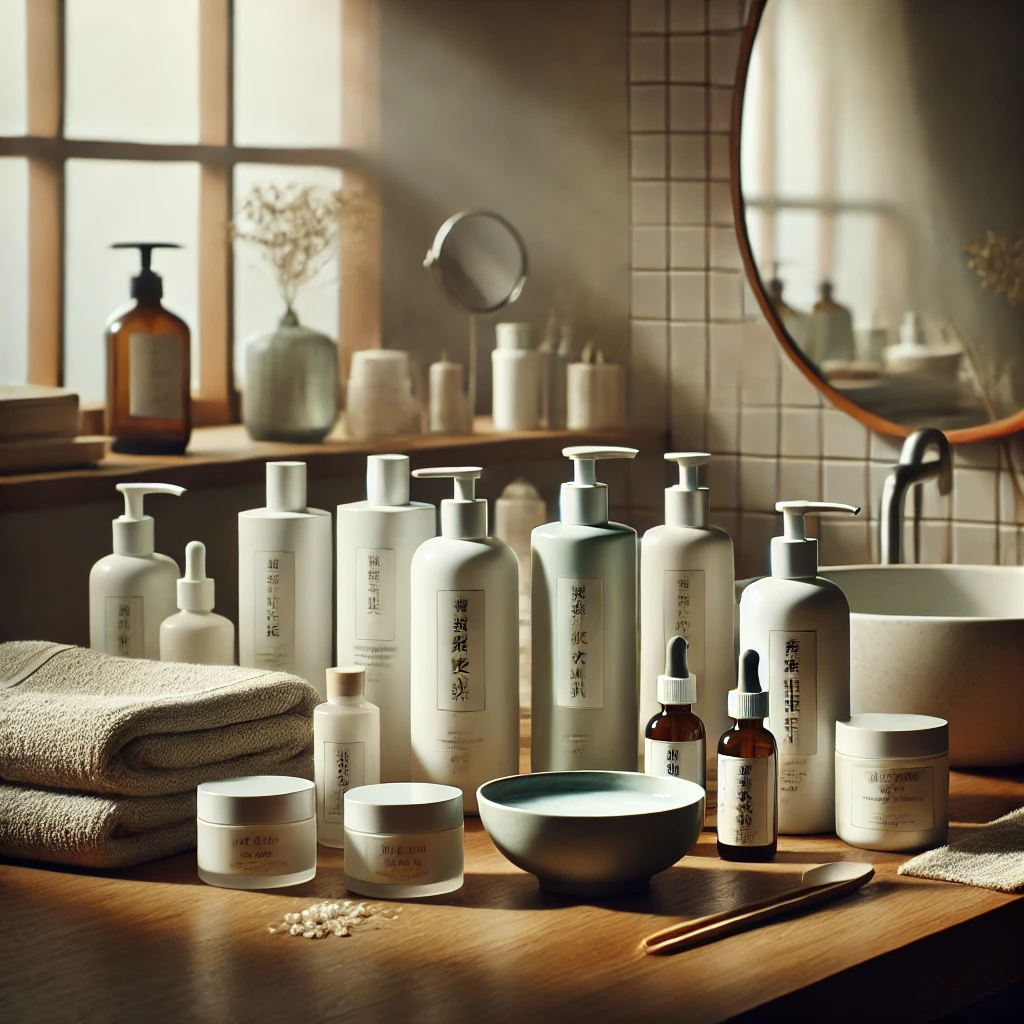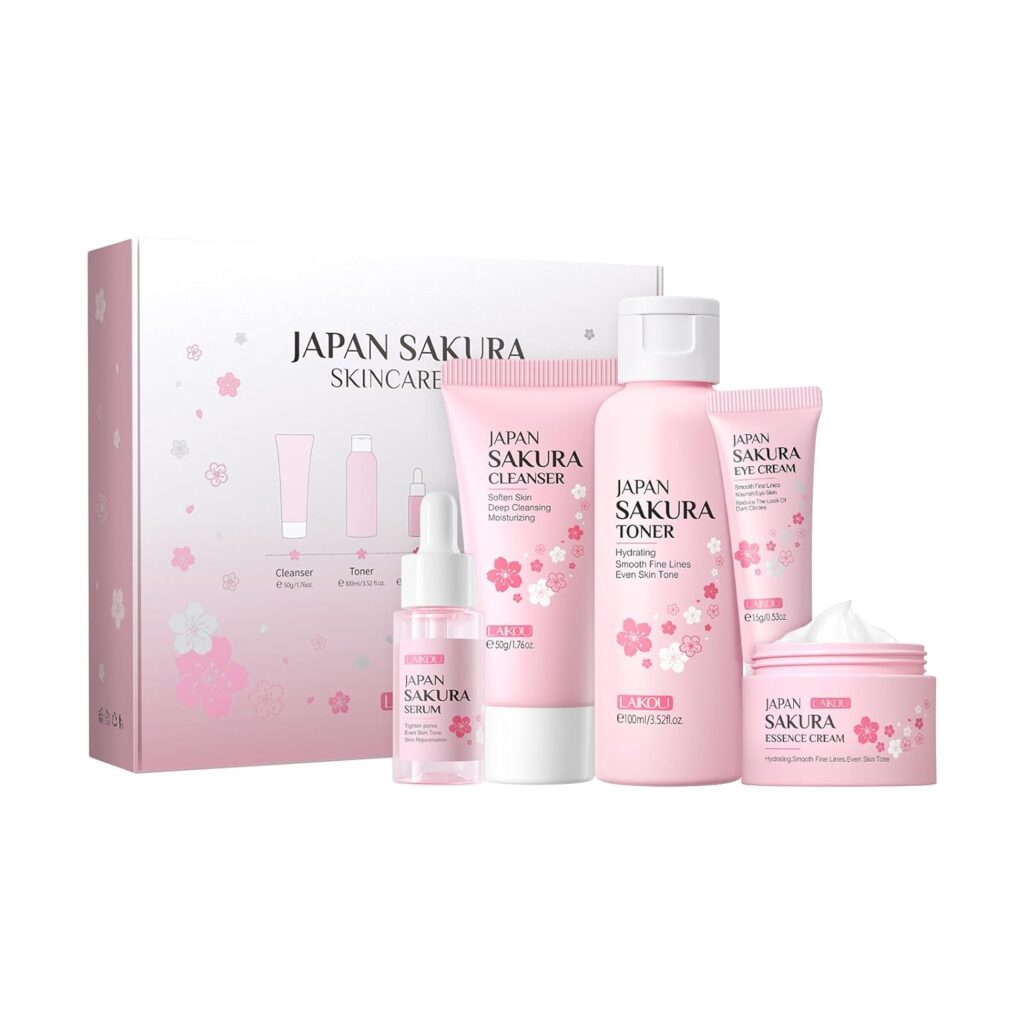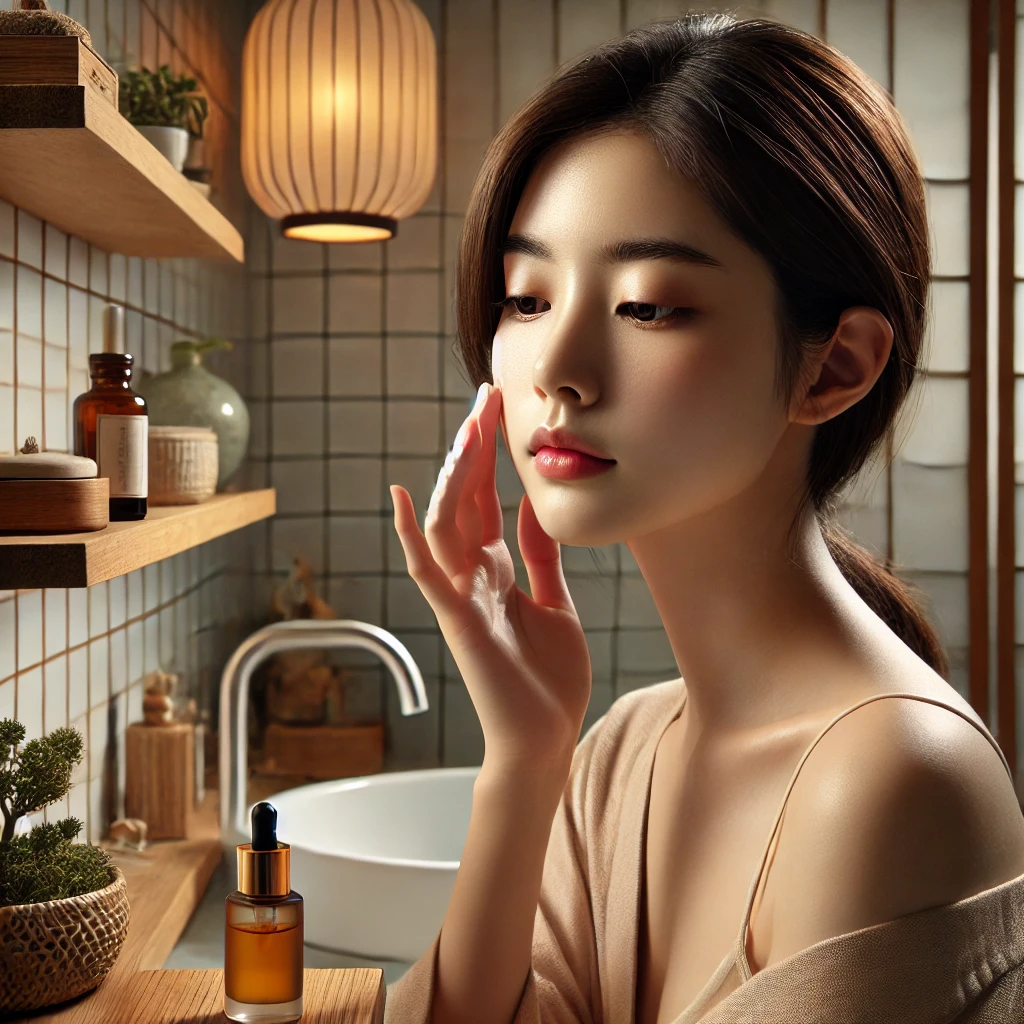The Japanese skincare routine has gained a reputation for creating flawless, glowing skin. It’s no surprise, given that the Japanese skincare routine is deeply rooted in culture, precision, and simplicity. But what makes it so effective? Let’s dive into the layers (pun intended) of this routine, exploring each step, understanding why it works, and how you can incorporate it into your skincare regimen. By the end of this article, you’ll know why the Japanese skincare routine might just be the key to the radiant skin you’ve always wanted.

What Makes the Japanese Skincare Routine Different?
When you think of Japanese beauty, what comes to mind? Clear, smooth, and luminous skin, right? The Japanese skincare routine stands apart because it emphasizes prevention and hydration rather than just treating issues as they arise. Unlike some other skincare routines that are heavy on exfoliation and harsh treatments, the Japanese approach focuses on nourishing and protecting the skin. This way, it maintains its health and youthfulness over time. They believe in “mochi skin”—yes, like the dessert. It’s a term used to describe skin that is soft, smooth, and bouncy, like fresh mochi.
Step-by-Step Breakdown of the Japanese Skincare Routine
Now that you understand the philosophy behind the Japanese skincare routine, let’s break down the steps. You’ll notice that it’s both simple and thoughtful, with each step designed to bring your skin closer to that mochi perfection.
Step 1: Double Cleansing – A Fresh Start
The first and most essential part of the Japanese skincare routine is double cleansing. The idea is to use an oil-based cleanser first, which breaks down makeup, sunscreen, and impurities that build up throughout the day. Japanese skincare focuses on not stripping the skin, so oil-based cleansers help keep your skin’s natural moisture intact. Next, a water-based cleanser is used to remove any leftover dirt, sweat, or oil. This two-step process ensures your skin is deeply clean without being dried out. Imagine trying to paint on a dirty canvas—this is why double cleansing sets the stage for the rest of the routine.
Step 2: Exfoliation – Gently Does It
Exfoliation in the Japanese skincare routine is all about gentleness. Unlike Western routines, where harsh scrubs might be common, Japanese exfoliators tend to be soft gels or powders that dissolve dead skin without aggravating the skin’s surface.
Why exfoliate gently?
Because maintaining the skin’s natural barrier is crucial. Excessive scrubbing can damage the barrier, leading to breakouts, irritation, and even premature aging. By exfoliating just once or twice a week, the skin remains smooth and able to better absorb the rest of the products.
Step 3: Hydration – The Heart of the Routine
Hydration is the star of the show in the Japanese skincare routine. After cleansing and exfoliating, it’s time to bring moisture back into the skin. Japanese skincare brands often use essences or lotions—not to be confused with Western lotions, which are thicker and creamier. These essences are lightweight, almost water-like, and are packed with hydrating ingredients like hyaluronic acid. They help to plump up the skin and prepare it for the heavier moisturizers that follow. You’ll notice that Japanese skincare products focus heavily on hydration because well-hydrated skin is key to maintaining that youthful, radiant look.
Step 4: Treatment – Targeting Specific Concerns
The Japanese skincare routine is tailored to each individual’s needs. At this stage, it’s all about treatments—think serums, ampoules, or any product that targets specific skin concerns. From dark spots to fine lines, this is the part of the routine where you can really focus on what your skin needs. Japanese treatments often contain natural ingredients like rice bran, green tea, and seaweed, which are packed with antioxidants. These help to brighten the skin, reduce inflammation, and protect against environmental damage.
Real-Life Example: How Consistency Pays Off
Take Yuki, a Tokyo-based graphic designer who swears by her Japanese skincare routine. At 42, she’s often mistaken for someone in her late 20s.
Yuki’s secret?
Consistency.For over a decade, she’s followed the same routine—never skipping a night of double cleansing and always prioritizing hydration. Her dedication has paid off, and she now enjoys smooth, firm, and youthful skin. It’s not just the products, but the commitment to caring for her skin that has made all the difference.
Step 5: Moisturizing – Locking in All the Goodness
Moisturizing is essential in any skincare routine, but in the Japanese skincare routine, it takes on a whole new level of importance. A good moisturizer seals in all the hydration and treatment products you’ve applied so far. Japanese moisturizers tend to be lightweight but highly effective, providing long-lasting hydration without clogging pores.
The best part?
They’re designed to leave your skin feeling soft, smooth, and balanced—not greasy. Look for moisturizers that contain ingredients like squalane or rice extract, both of which are commonly used in Japanese skincare for their nourishing and protective properties.
Step 6: Sun Protection – The Non-Negotiable
If there’s one step in the Japanese skincare routine that you simply can’t skip, it’s sun protection. Japanese women are known for their beautiful, even-toned skin, and this is largely due to their diligent use of sunscreen. UVA and UVB rays are the leading cause of premature aging, and protecting your skin from the sun’s harmful rays is essential to maintaining a youthful appearance. Japanese sunscreens are often lightweight and absorb quickly, leaving no sticky residue. They’re designed to be worn every day, even on cloudy days or when you’re indoors.

Why Prevention is Better than Cure
One of the most remarkable aspects of the Japanese skincare routine is its focus on prevention. Rather than waiting for wrinkles, fine lines, or dark spots to appear, the routine is designed to prevent these issues from developing in the first place. This mindset explains why you’ll often see Japanese women with smooth, clear skin well into their 50s and beyond. Prevention is easier, less expensive, and far more effective than trying to reverse damage once it’s done.
Step 7: Masking – A Luxurious Treat
Once or twice a week, a sheet mask is added to the Japanese skincare routine for an extra boost of hydration. These masks are soaked in serums that target specific skin concerns, from dryness to dullness. The beauty of sheet masks is that they allow your skin to absorb a high concentration of nutrients in a short amount of time. It’s like giving your skin a little luxury spa treatment right at home. Plus, there’s something incredibly relaxing about kicking back with a sheet mask on after a long day.
Final Thoughts: The Simplicity and Wisdom Behind the Japanese Skincare Routine
The beauty of the Japanese skincare routine lies in its simplicity. It’s not about chasing the latest trends or slathering on dozens of products. Instead, it’s about consistency, prevention, and a deep respect for the skin. Each step is designed to work in harmony, nourishing and protecting the skin over time. So, if you’re looking to achieve that luminous, smooth, and youthful glow, why not give the Japanese skincare routine a try? Remember, like Yuki, consistency is key.

FAQs
What does Japanese skincare focus on?
Japanese skincare focuses on hydration, prevention, and maintaining the skin’s natural barrier. The approach emphasizes gentle care to keep skin soft, smooth, and balanced, rather than using harsh treatments to fix issues after they arise.
How do Japanese people take care of their skin?
Japanese people often follow a multi-step skincare routine that includes double cleansing, hydration, and protection. They prioritize consistent care, using natural ingredients and lightweight products to keep the skin nourished and youthful, while also emphasizing sun protection.
How many skincare steps do you really need?
The Japanese skincare routine typically includes about five to seven steps, including cleansing, exfoliating, hydrating, treating specific concerns, moisturizing, and applying sunscreen. However, these can be adjusted based on individual skin needs and preferences.
What is the most important step in a skincare routine?
Using sunscreen daily prevents UV damage, which is the leading cause of premature aging, dark spots, and skin cancer. Consistent protection from the sun is essential for maintaining youthful skin.
How many times can I do my skincare routine?
You should do your skincare routine twice a day—once in the morning and once before bed. This ensures your skin stays clean, hydrated, and protected from environmental stressors throughout the day and night.
Is Japanese skincare better than Western?
Japanese skincare tends to focus on prevention and gentle care, while Western routines may focus more on treatment. Neither is inherently better, but Japanese skincare emphasizes hydration and long-term health, making it a great option for maintaining youthful, glowing skin.
What is Japan’s number one skincare line?
One of Japan’s top skincare lines is Shiseido, known for its innovative formulas and high-quality ingredients. Shiseido offers a range of products designed for hydration, anti-aging, and skin brightening, making it a favorite both in Japan and internationally.
How often do Japanese wash their face?
Japanese people typically wash their face twice daily—in the morning and at night—as part of their skincare routine. This ensures the skin stays clean and free of impurities while preserving its natural moisture balance.
How long should you wait between each step of the skincare routine?
It’s recommended to wait around 30 seconds to 1 minute between each step to allow the products to fully absorb into the skin. This ensures each product works effectively before moving on to the next step.
What is the best basic skincare routine?
The best basic skincare routine includes cleansing, hydration, and protection. Start with a gentle cleanser, follow with a lightweight moisturizer or serum, and finish with sunscreen in the morning. These three steps are essential for healthy, balanced skin.
Read More:

